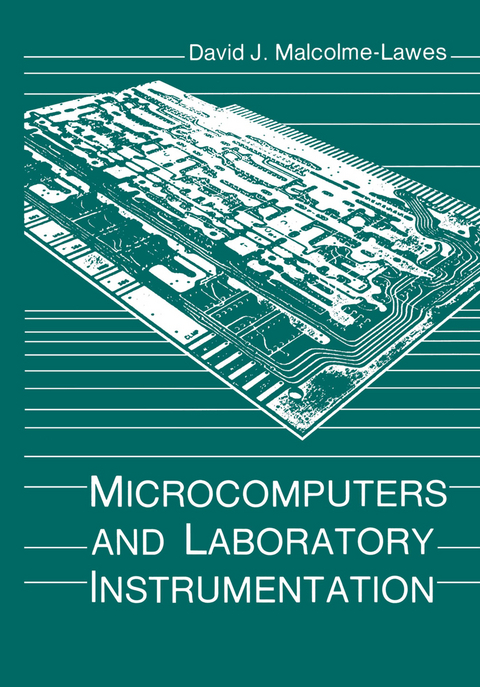
Microcomputers and Laboratory Instrumentation
Springer-Verlag New York Inc.
978-1-4612-8291-4 (ISBN)
1 Introduction.- 1.1 Laboratory instrumentation and microcomputers.- 1.2 Measurement systems.- 1.3 Electronic black boxes.- 1.4 A practical footnote.- 2 The Basics of Laboratory Signals.- 2.1 Transducers.- 2.2 Measurement signals.- 2.3 The transducer connection.- 2.4 Noise and interference.- 2.5 Minimising interference.- 2.6 Signal-to-noise ratio.- 2.7 Control signals.- 3 The Elements of Analog Signal Handling.- 3.1 Op-amps.- 3.2 Feedback systems.- 3.3 Basic amplifier configurations.- 3.4 Bandwidth and slew rate.- 3.5 Practical dc signal circuits.- 3.6 Ac signal circuits.- 3.7 Integrators.- 3.8 Differentiators.- 3.9 Pulse amplifiers.- 3.10 Filters.- 3.11 High voltage and high power control circuits.- 4 The Elements of Digital Signal Handling.- 4.1 Logic gates.- 4.2 TTL families.- 4.3 C-MOS families.- 4.4 C-MOS and TTL together.- 4.5 MSI circuits.- 4.6 Generating logic levels.- 4.7 Analog/digital interconversion.- 4.8 Serial digital signals.- 4.10 Some useful logic controlled circuits.- 5 The Modern Microcomputer.- 5.1 Bits and bytes.- 5.2 Microcomputer elements.- 5.3 The video display.- 5.4 Disks.- 5.5 Peripherals.- 5.6 The micro families.- 5.7 The programming language.- 5.8 The operating system.- 5.9 Byte transfers.- 5.10 External byte transfers.- 5.11 Interrupts and interrupt flags.- 6 The PC Family.- 6.1 The elements of a PC.- 6.2 Video display adaptors.- 6.3 Interface cards - a user port adaptor.- 6.4 The disk operating system.- 6.5 The DOS interrupts.- 6.6 Other environments.- 7 Interfacing Microcomputers with Laboratory Signals.- 7.1 Basic instrumental interface types.- 7.2 Multiplexing.- 7.3 Multiple byte interfaces.- 7.4 Interface control.- 7.5 Handshaking.- 7.6 Synchronous byte transfers.- 7.7 Dynamic interfaces.- 8 Parallel Standard Interface Systems.- 8.1 Introduction.- 8.2 The Centronics standard.- 8.3 The IEEE 488 standard.- 8.4 Examples of GPIB adaptor cards for the PC.- 9 The Serial Standard Interface and Communication System.- 9.1 Serial standards.- 9.2 Serial data transfers.- 9.3 The RS232C connection.- 9.4 Data transfers.- 9.5 Connecting RS232C systems.- 9.6 The PC serial port.- 9.7 A microcomputer/RS232 adaptor.- 9.8 Communication using modems.- 9.9 File transfer protocols.- 10 System Design and Case Study.- 10.1 An approach to system design.- 10.2 Case study: A variable wavelength colorimeter.- Appendices.- Appendix 1: The ASCII code.- Appendix 2: Binary and BCD tables.- Appendix 3: Decimal-hexadecimal conversion tables.- Device Index.
| Zusatzinfo | 284 p. |
|---|---|
| Verlagsort | New York, NY |
| Sprache | englisch |
| Maße | 170 x 244 mm |
| Themenwelt | Sachbuch/Ratgeber ► Natur / Technik ► Garten |
| Schulbuch / Wörterbuch ► Lexikon / Chroniken | |
| Naturwissenschaften ► Biologie ► Biochemie | |
| Naturwissenschaften ► Chemie ► Analytische Chemie | |
| Technik ► Umwelttechnik / Biotechnologie | |
| ISBN-10 | 1-4612-8291-8 / 1461282918 |
| ISBN-13 | 978-1-4612-8291-4 / 9781461282914 |
| Zustand | Neuware |
| Haben Sie eine Frage zum Produkt? |
aus dem Bereich


